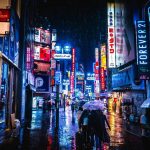Lessons from the San Francisco Bay Area Study Tour: George Atta
The ULI Rose Center for Public Leadership spoke with City and County of Honolulu Planning and Permitting Department Director George Atta, a 2013-2014 Daniel Rose Fellow, about the program’s December 2013 study visit to the San Francisco Bay Area.
Rose Center: We began the study tour with an overview of the unique real estate and development climate of San Francisco. Did you see any similarities there with your work in Honolulu?
George Atta: In San Francisco they are having a building boom south of Market. We’re having a building boom in Kakaʻako, and also in Waikiki. We’re watching the cranes go up. There are some jurisdictional differences in Honolulu, of course, as we have a state redevelopment agency with some zoning authority. But like San Francisco, we are running into community criticism over increasing density and height.
San Francisco has concerns about the high tech industry coming into the city, creating the kind of real estate market that gentrifies the area. We’re getting the same concern in Kakaʻako, the perception that the only things going up are luxury condos, raising land values so average people are getting priced out of the market. It’s a different context but a similar issue.
Listening to how San Francisco is responding helps me get a perspective on Honolulu.
It was nice to go to Oakland [Calif.] as well — the same region but two different cities. Talking to the two different planning departments, understanding the different histories, was a nice contrast. We [Daniel Rose Fellows] saw things there that we are doing in our cities as well. It’s nice to see how other cities are doing similar things.
What, in particular, caught your interest in Oakland?
The street closings and streetscape improvements in Oakland—we’re in a similar situation in Honolulu. We passed our complete streets ordinance a year and a half ago and we’re now in the implementation process. We are talking about raised intersections to slow cars down and give preference to pedestrians. We are considering whether to actually close certain streets [to automobile traffic] or not.
Now the council has asked us to do a comprehensive study of parklets. In Oakland, when we met with [Mayor Jean Quan and the other Oakland Rose Fellows] on Broadway, I noticed—right in front of the building where we were—that two of the parking stalls were being used as a parklet and people were dining out there. I was watching, looking, and I noticed that the parklets were mobile. You can bring them in, and then you can take them back out if you to.
A lot of what we saw in Oakland was very relevant to what we are doing in Honolulu.
We are presently working with a private landowner who owns a block of land, working to use the city street in such a way that creates a greater integration between the block and the street. It’s similar to what they are doing in Oakland, with pop-up retail and so on.
We have been doing these sorts of things with individual developments but now the council is asking us to do a comprehensive study of the issue.
What lessons did you learn in San Francisco?
I thought SPUR in San Francisco was a novel institution. We don’t have such a thing in Honolulu, but we are beginning to look at land trusts to deal with our affordable housing problem. Seeing how other cities are dealing with housing policies helps us to think creatively about how we are going to be addressing that problem.
It’s a sidebar to economic development: everyone says you’d rather be in a boom economy than in an recession economy, and that’s true, but the boom economy creates economic pressure that tends to gentrify neighborhoods and make affordable housing unaffordable, and that’s a problem.
We know there’s no silver bullet, but the more tools we have, the more likely we are to be able to address the problem. Listening to how San Francisco and Oakland are dealing with it gives inspiration and education on the issue.
In Honolulu, you are making a major new investment in an elevated rapid transit line. Transportation is shaping the growth of the Bay Area as well. Are there any parallels?
Yes, we have a light rail system under construction right now. We’re facing a high rate of growth in Kakaʻako and everybody is counting on the rail to mitigate much of the traffic congestion issue.
The biggest issue for us has to do with heights and densities around the transit stations. It’s a challenging issue. We’re always getting comments on views being blocked. Every time we approve a high-rise, the neighboring high-rise is saying, “You’re blocking my view!” People often don’t like the high density development, but then we have to ask: What would you rather do, extend development into suburban and rural areas?
We’ve directed growth toward the transit corridor so we can prevent suburban sprawl from going into the countryside. Our rail is both a growth management tool as well as a transportation tool.
There is an ongoing debate about the impact of high density development. We are trying to get a clearer picture of what new urban high density living is like so people can see that it can be a great environment, so we can take away some of the negative impressions about heights and densities.
We’ve been planning our TOD [transit-oriented development] district for some time. We have yet to articulate to the public what that would feel like — the amenities, the sociability, the benefits of being in that environment.
Are there any models that you look to when planning your TOD district?
There are many. Portland has great neighborhoods, as does San Francisco. We have to point to some good examples of wonderful urban spaces. I think it’s an education process.
What we don’t have in Honolulu is a really high density environment, a place where you can have a good urban lifestyle. Not just a block for the rich people. I think there is some resentment, the perception that even if they may look good, some developments are all for the rich.
Within that context we are trying to come up with an affordable housing policy that works in an urban environment. Uniquely, we have the Department of Hawaiian Home Lands, whose mission is to provide homesteading opportunities for Native Hawaiians. They have always looked at the suburban single family model [for development] but they are beginning to look at urban development as an option. It would be great if they were to establish a Home Land inside the city. With the cost of land, realistically, an urban option would fit right in.
One circumstance that Honolulu has in common with another one of this year’s Rose Fellowship Cities—Portland, Oregon—has to do with the strict urban growth boundaries established by legislation. How will urban growth boundaries come into play in Honolulu in the coming years?
The boundaries were set many years ago and development is finally bumping up against them. We’re filling in the last vacant spots available, and there is pushback from people who want to save agricultural land within the boundaries.
But we are reaching the point where we don’t have any more vacant spaces inside the boundaries. We have a proposal to move the urban growth boundaries outwards; an amendment is before the city council but the community is divided in half. It’s an ongoing debate: urban growth boundaries are how we manage growth, but how sacrosanct is the line?
What was your favorite place we encountered on the study tour?
I can’t really say that I have a favorite. My daughter went to the University of San Francisco and I had friends that lived in Berkley and Oakland at the time. It was nice to be able to go back, to see the contrast between how a place was and what it’s looking like now. I remember San Francisco and Oakland from the time they were struggling; now they are seeing a revitalization.
This interview was conducted by Timothy Boscarino of Issue Media Group.



